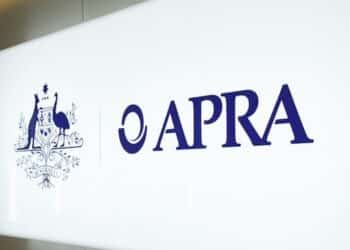Speaking at the ifa Adviser Innovation Summit last week, Corey Wastle, chief executive at Verse Wealth, and specialist adviser Nathan Fradley explained that there are a lot of misconceptions about the idea of a video statement of advice (SOA), including the idea that advisers would be doing away with advice documents altogether.
“You can do that, but when you think about this term, ‘video SOA’, always think about it on a spectrum,” Wastle explained.
“On one end of the spectrum, you’ve got the example of the SOA becomes a video and making sure I meet all the content requirements of a compliant statement of advice in that video. The other end of the spectrum is the traditional statement of advice: 80 pages, all written, jargon laden, full of duplication, unnecessary content and so on.”
The leading document on the regulation of SOAs, the Australian Securities and Investments Commission’s (ASIC) regulatory guide 175, has nothing in it about an SOA needing to be a written document, Fradley said.
“The word clear appears 47 times in RG 175, concise 27 times, the word written does not appear once. It doesn’t even allude to written, it alludes to presented,” he explained.
“In fact, it says, ‘We consider the presentation requirements as important as the content requirements’. The way you deliver your advice so the client understands it, be it what most advisers are doing by getting on whiteboards, spending the time with them, getting to understand them, is as important as what’s in the statement. If your statement happens to be written, so be it.”
RG 175 also notes that there is not a single correct or ideal form that an SOA needs to take, and that “the law provides flexibility in tailoring the format and presentation”.
“How does every one of the people in this room got a clone of the same 80-page document if there is no one way to do it?” Fradley asked.
“This is almost like the industry has whipped itself into this process instead of looking at things the way they are. This isn’t a call to action for just advisers, this is a call to action for licensees. ‘Oh, we’ve got QAR coming in soon. Let’s see what happens.’ Do it now.”
Wastle also put the blame for the unwieldy version of the SOA to many advisers as a result of “compliance-led thinking”.
“Historically, advice firms, businesses and advisers have been compliance led in how they’ve built their client experience, made their decisions, and delivered their documentation,” he said.
“We want to shift that, and it’s time to shift that, to client experience-led thinking. So instead of going, ‘How can I make sure I’m doing everything compliantly and then try and get the best experience I can within that framework’, flip it and go to, ‘Let’s give the best client experience we possibly can and how do we make that compliant’.”
There is, however, a middle ground that still provides a pared down version of a document to clients while using a recorded meeting as the actual SOA. Doing it this way, Wastle explained, can do away with file notes entirely.
“Because every meeting is recorded, Zoom or in person, we honestly don’t do file notes. The time saving there is significant, it’s 184 hours, that’s 46 working weeks a year for an adviser by eight meetings a week by taking 30 minutes to do a file notes. You literally give up a month of your year to do file notes,” he said.
“It’s not just the time cost, it’s the cognitive load cost. Advisers have so much on their plate, you go from one meeting to the next and you have this load of work that just builds up behind you that kind of creates stress and a sense of being overwhelmed. Instead, you can move on with your day freer and lighter with less stress.”
Fradley added that it can also be a much stronger form of documentation to fall back on if needed.
“There is probably not a court in the world that’s going to say your recount an hour and a half later or within 48 hours is better than an actual recording and transcript of that meeting and knowing what happened,” he said.
“When you wrote, ‘They proceeded because they understood’ on your file note versus a video of someone’s face going, ‘Yeah, Corey that makes a lot of sense, I want to do that’, it’s a huge difference when it comes to defence.”




There would still need to be some kind of file note if an adviser is to refer back to what was said in the meeting; especially any updates or changes to the client’s situation. Even if this is automated it would still be an important part of the process. Also, a pre-recorded video SOA ignores the behavioural side of presenting and how that ties into the code of ethics.
Without affording any room for nuance in this call for video SOAs, I am concerned that those who are pushing hard for this are simply going to create digital avatars of themselves, get ChatGPT (or another LLM) to write a script and plug that into a text-to-speech software. If that becomes acceptable then there are many reasons for concern.
Until its tested in court. Good luck.